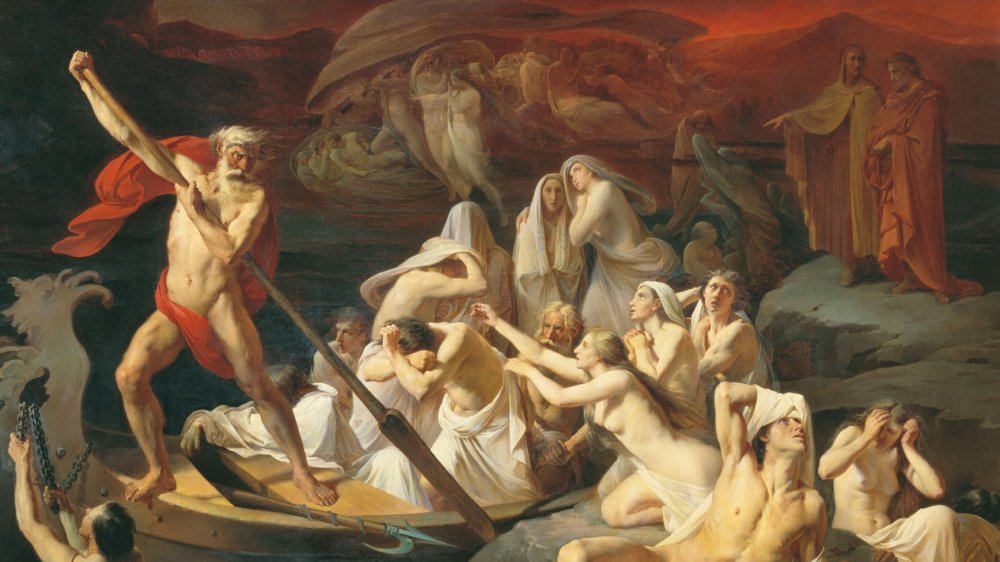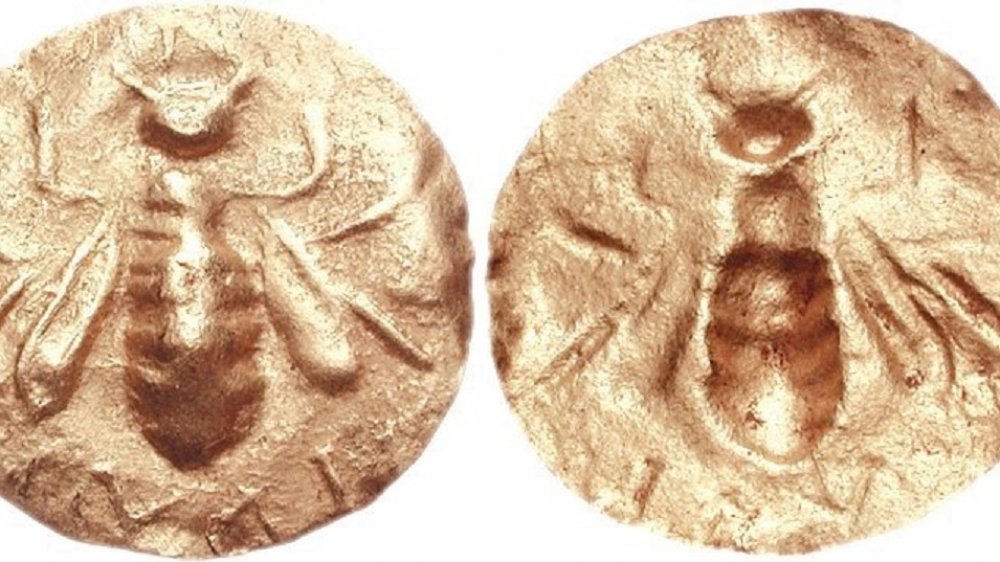The Real Reason People Were Buried With Coins In Their Mouths
Long before people were tossing coins to ultra-buff witchers, they were placing them in the mouths of the dead. "Charon's Obol," as such coins have been dubbed, have been found in the graves of the once-living since the 5th century BCE, largely throughout Western European countries. Sometimes it's a single coin in the mouth, and other times two, one over each eye.
The practice seems to have started shortly after coins came to be used as currency around 650 BCE in ancient Greece, as reported by Coin Week, and was documented for the first time in the writings of the Greek playwright Aristophanes approximately 150 years earlier. By the 1st and 3rd century, the practice can be found in modern-day Austria and Hungary (although it's unknown whether or not it derives from the ancient Greeks), and even the Khmer Empire in Cambodia from the 9th – 13th CE placed coins in the mouths of the dead (before cremating them), as described in Khmer Times.
Of course, adorning the graves of the dead — honoring them in some fashion — is not exactly a new concept. Neanderthals as far back as 100,000 years ago were doing so with flowers, food, tools, and the mineral-derived pigment, red ochre. The ancient Egyptians famously buried their royalty with enough food to last a literal eternity, such as King Tutankhamun, whose tomb contained 48 entire cases of butchered meat, per Wired. But the lore surrounding Charon's Obol as a funeral rite has intrigued numismatists (coin collectors) and scholars since the ancient form of currency started circulating from the hands of grave robbers and legitimate archaeologists, alike.
Two for the ferryman
The most popular consensus for the meaning behind Charon's Obol can be seen in the nickname itself: Charon (most likely pronounced "care on"), deity and ferryman for the River Styx, which in Greek mythology connects the shores of the living and the dead. As the one who escorts the deceased from one to the other, he might require payment, like some kind of supernatural bribe (why a god needs physical currency is another mystery, altogether).
Being able to pay, cleverly, retains the double fortune of being a sign of status. Not only can the deceased be prevented from being turned away from the afterlife, but his or her family members need worry about appearing like they couldn't pay an obol's worth of money (equivalent to 1/6th drachma, a standard, silver-coined denomination in ancient Greece through the 6th century BCE). The term "obol," in fact, was used to vaguely describe any kind of junky, low-value, circular fragment of bronze coinage. A low bar for entry, indeed. The original meaning of "obol" was "roasting spit," likely because food was a form of currency before coins, and food may have been used to not only sustain the dead in the afterlife, but pay their entrance fee, as well.
In this way, the gimmicky association of coins-in-mouths with Charon and the River Styx is likely anachronistic and invented after-the-fact. After all, the practical concerns of death — paying for a burial, not losing face in the eyes of the community, using ritual for a sense of closure — make for a less fantastical story than passing over coins to a bearded and robed ferryman of the dead.

